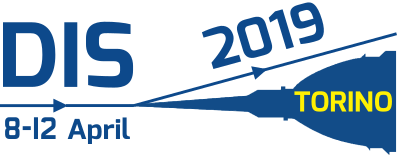Speaker
Description
Quarkonium states are powerful tools to study the properties of thequark-gluon plasma (QGP), since their production is strongly affected by the dense and hot medium created in heavy-ion collisions.
In nucleus-nucleus interactions at LHC energies, charmonia reveal a smaller suppression with respect to the one measured at lower energies, as at RHIC and SPS. This observation points to the existence of two competing mechanisms, a suppression and a (re)combination process, affecting quarkonium production.
The role played by these mechanisms is confirmed by the measurement of a significant J/$\psi$ elliptic flow ($v_{2}$) in semi-central collisions. The large observed $v_{2}$ is also suggestive of a strong participation of the charm quarks to the medium collectivity.
In the bottomonium sector, a hint for a sequential suppression of $\Upsilon$ states is observed at RHIC and LHC, allowing a first theory-based attempt to extract the QGP temperature.
Proton-nucleus interactions allow us to address the influence of cold nuclear effects on quarkonium production. Mechanisms such as the modification of the parton distribution functions in nuclei or the coherent energy loss of the ${\rm q}\bar{\rm q}$ pair in the medium are relevant for describing the production of quarkonium ground states. On the contrary, final state mechanisms, possibly related to the presence of a dense medium, are required to explain the stronger suppression of the excited quarkonium states.
In this talk, a review of the large wealth of increasingly precise data, from RHIC and LHC experiments, will be presented, together with a comparison to the state-of-the-art theory models.
